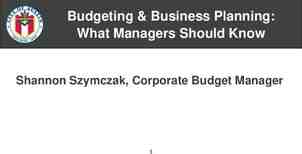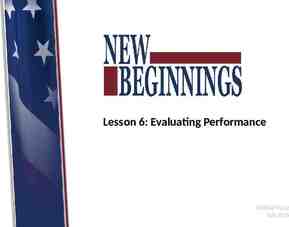Chapter 3 Introduction to Risk Management
32 Slides479.50 KB

Chapter 3 Introduction to Risk Management

Agenda Meaning of Risk Management Objectives of Risk Management Steps in the Risk Management Process Benefits of Risk Management Personal Risk Management Copyright 2014 Pearson Education, Inc. All rights reserved. 3-2

Meaning of Risk Management Risk Management is a process that identifies loss exposures faced by an organization and selects the most appropriate techniques for treating such exposures A loss exposure is any situation or circumstance in which a loss is possible, regardless of whether a loss occurs – E.g., a plant that may be damaged by an earthquake, or an automobile that may be damaged in a collision Copyright 2014 Pearson Education, Inc. All rights reserved. 3-3

Objectives of Risk Management Risk management has objectives before and after a loss occurs Pre-loss objectives: – Prepare for potential losses in the most economical way – Reduce anxiety – Meet any legal obligations Copyright 2014 Pearson Education, Inc. All rights reserved. 3-4

Objectives of Risk Management Post-loss objectives: – – – – – Survival of the firm Continue operating Stability of earnings Continued growth of the firm Minimize the effects that a loss will have on other persons and on society Copyright 2014 Pearson Education, Inc. All rights reserved. 3-5

Risk Management Process Identify potential losses Measure and analyze the loss exposures Select the appropriate combination of techniques for treating the loss exposures Implement and monitor the risk management program Copyright 2014 Pearson Education, Inc. All rights reserved. 3-6

Exhibit 3.1 Steps in the Risk Management Process Copyright 2014 Pearson Education, Inc. All rights reserved. 3-7

Identify Loss Exposures Property loss exposures Liability loss exposures Business income loss exposures Human resources loss exposures Crime loss exposures Employee benefit loss exposures Foreign loss exposures Intangible property loss exposures Failure to comply with government rules and regulations Copyright 2014 Pearson Education, Inc. All rights reserved. 3-8

Identify Loss Exposures Risk Managers have several sources of information to identify loss exposures: – – – – – Risk analysis questionnaires and checklists Physical inspection Flowcharts Financial statements Historical loss data Industry trends and market changes can create new loss exposures. – e.g., exposure to acts of terrorism Copyright 2014 Pearson Education, Inc. All rights reserved. 3-9

Measure and Analyze Loss Exposures Estimate for each type of loss exposure: – Loss frequency refers to the probable number of losses that may occur during some time period – Loss severity refers to the probable size of the losses that may occur Rank exposures by importance Loss severity is more important than loss frequency: – The maximum possible loss is the worst loss that could happen to the firm during its lifetime – The probable maximum loss is the worst loss that is likely to happen Copyright 2014 Pearson Education, Inc. All rights reserved. 3-10

Select the Appropriate Combination of Techniques for Treating the Loss Exposures Risk control refers to techniques that reduce the frequency and severity of losses Methods of risk control include: – Avoidance – Loss prevention – Loss reduction Copyright 2014 Pearson Education, Inc. All rights reserved. 3-11

Select the Appropriate Combination of Techniques for Treating the Loss Exposures Avoidance means a certain loss exposure is never acquired or undertaken, or an existing loss exposure is abandoned – The chance of loss is reduced to zero – It is not always possible, or practical, to avoid all losses Copyright 2014 Pearson Education, Inc. All rights reserved. 3-12

Select the Appropriate Combination of Techniques for Treating the Loss Exposures Loss prevention refers to measures that reduce the frequency of a particular loss – e.g., installing safety features on hazardous products Loss reduction refers to measures that reduce the severity of a loss after it occurs – e.g., installing an automatic sprinkler system Copyright 2014 Pearson Education, Inc. All rights reserved. 3-13

Select the Appropriate Combination of Techniques for Treating the Loss Exposures Risk financing refers to techniques that provide for the payment of losses after they occur Methods of risk financing include: – Retention – Non-insurance Transfers – Commercial Insurance Copyright 2014 Pearson Education, Inc. All rights reserved. 3-14

Risk Financing Methods: Retention Retention means that the firm retains part or all of the losses that can result from a given loss – Retention is effectively used when: No other method of treatment is available The worst possible loss is not serious Losses are highly predictable – The retention level is the dollar amount of losses that the firm will retain Copyright 2014 Pearson Education, Inc. All rights reserved. 3-15

Risk Financing Methods: Retention A risk manager has several methods for paying retained losses: – Current net income: losses are treated as current expenses – Unfunded reserve: losses are deducted from a bookkeeping account – Funded reserve: losses are deducted from a liquid fund – Credit line: funds are borrowed to pay losses as they occur Copyright 2014 Pearson Education, Inc. All rights reserved. 3-16

Risk Financing Methods: Retention A captive insurer is an insurer owned by a parent firm for the purpose of insuring the parent firm’s loss exposures – A single-parent captive is owned by only one parent – An association or group captive is an insurer owned by several parents Copyright 2014 Pearson Education, Inc. All rights reserved. 3-17

Risk Financing Methods: Retention Reasons for forming a captive include: – The parent firm may have difficulty obtaining insurance – To take advantage of a favorable regulatory environment – Costs may be lower than purchasing commercial insurance – A captive insurer has easier access to a reinsurer – A captive insurer can become a source of profit Copyright 2014 Pearson Education, Inc. All rights reserved. 3-18

Risk Financing Methods: Retention Premiums paid to a single parent (pure) captive are generally not income-tax deductible. They may be tax deductible if: – The transaction is a bona fide insurance transaction – A brother-sister relationship exists – The captive insurer writes a substantial amount of unrelated business – The insureds are not the same as the shareholders of the captive Premiums paid to a group captive are usually income-tax deductible. Copyright 2014 Pearson Education, Inc. All rights reserved. 3-19

Risk Financing Methods: Retention Self-insurance, or self-funding is a special form of planned retention by which part or all of a given loss exposure is retained by the firm A risk retention group (RRG) is a group captive that can write any type of liability coverage except employers’ liability, workers compensation, and personal lines – They are exempt from many state insurance laws Copyright 2014 Pearson Education, Inc. All rights reserved. 3-20

Risk Financing Methods: Retention Advantages – Save on loss costs – Save on expenses – Encourage loss prevention – Increase cash flow Copyright 2014 Pearson Education, Inc. All rights reserved. Disadvantages – Possible higher losses – Possible higher expenses – Possible higher taxes 3-21

Risk Financing Methods: Non-insurance Transfers A non-insurance transfer is a method other than insurance by which a pure risk and its potential financial consequences are transferred to another party – Examples include: contracts, leases, holdharmless agreements Copyright 2014 Pearson Education, Inc. All rights reserved. 3-22

Risk Financing Methods: Non-insurance Transfers Advantages – Can transfer some losses that are not insurable – Less expensive – Can transfer loss to someone who is in a better position to control losses Copyright 2014 Pearson Education, Inc. All rights reserved. Disadvantages – Contract language may be ambiguous, so transfer may fail – If the other party fails to pay, firm is still responsible for the loss – Insurers may not give credit for transfers 3-23

Risk Financing Methods: Insurance Insurance is appropriate for low-probability, high-severity loss exposures – The risk manager selects the coverages needed, and policy provisions – A deductible is a specified amount subtracted from the loss payment otherwise payable to the insured – In an excess insurance policy, the insurer pays only if the actual loss exceeds the amount a firm has decided to retain – The risk manager selects the insurer, or insurers, to provide the coverages Copyright 2014 Pearson Education, Inc. All rights reserved. 3-24

Risk Financing Methods: Insurance – The risk manager negotiates the terms of the insurance contract – A manuscript policy is a policy specially tailored for the firm – The parties must agree on the contract provisions, endorsements, forms, and premiums – Information concerning insurance coverages must be disseminated to others in the firm – The risk manager must periodically review the insurance program Copyright 2014 Pearson Education, Inc. All rights reserved. 3-25

Risk Financing Methods: Insurance Disadvantages – Premiums may be costly – Negotiation of contracts takes time and effort – The risk manager may become lax in exercising loss control Copyright 2014 Pearson Education, Inc. All rights reserved. Advantages – Firm is indemnified for losses – Uncertainty is reduced – Insurers can provide valuable risk management services – Premiums are income-tax deductible 3-26

Exhibit 3.2 Risk Management Matrix Copyright 2014 Pearson Education, Inc. All rights reserved. 3-27

Market Conditions and the Selection of Risk Management Techniques Risk managers may have to modify their choice of techniques depending on market conditions in the insurance markets The insurance market experiences an underwriting cycle – In a “hard” market, profitability is declining, underwriting standards are tightened, premiums increase, and insurance is hard to obtain – In a “soft” market, profitability is improving, standards are loosened, premiums decline, and insurance become easier to obtain Copyright 2014 Pearson Education, Inc. All rights reserved. 3-28

Implement and Monitor the Risk Management Program Implementation of a risk management program begins with a risk management policy statement that: – – – – Outlines the firm’s objectives and policies Educates top-level executives Gives the risk manager greater authority Provides standards for judging the risk manager’s performance A risk management manual may be used to: – Describe the risk management program – Train new employees Copyright 2014 Pearson Education, Inc. All rights reserved. 3-29

Implement and Monitor the Risk Management Program A successful risk management program requires active cooperation from other departments in the firm The risk management program should be periodically reviewed and evaluated to determine whether the objectives are being attained – The risk manager should compare the costs and benefits of all risk management activities Copyright 2014 Pearson Education, Inc. All rights reserved. 3-30

Benefits of Risk Management Enables firm to attain its pre-loss and postloss objectives more easily A risk management program can reduce a firm’s cost of risk Reduction in pure loss exposures allows a firm to enact an enterprise risk management program to treat both pure and speculative loss exposures Society benefits because both direct and indirect losses are reduced Copyright 2014 Pearson Education, Inc. All rights reserved. 3-31

Personal Risk Management Personal risk management refers to the identification of pure risks faced by an individual or family, and to the selection of the most appropriate technique for treating such risks The same principles applied to corporate risk management apply to personal risk management Copyright 2014 Pearson Education, Inc. All rights reserved. 3-32






